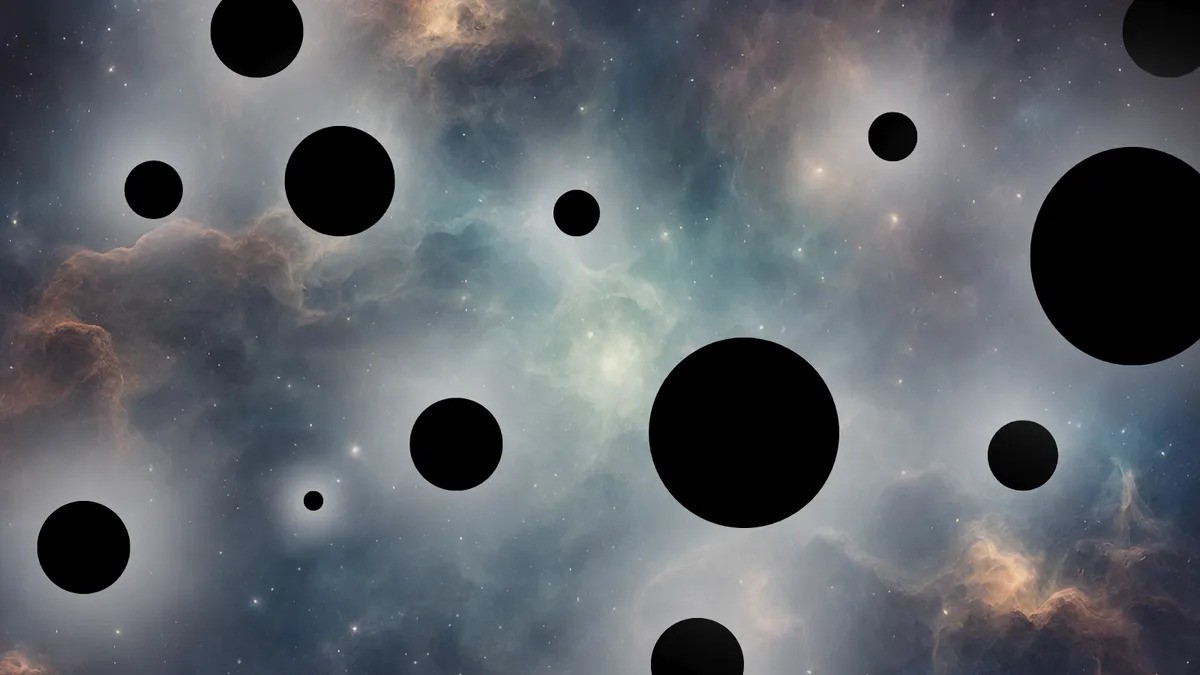A new paper by European physicists indicates that dark matter may consist of tiny black holes. They were formed at the very beginning of the existence of the universe. Previously, this possibility was ruled out due to a phenomenon known as “Hawking radiation”.

Primordial black holes
Recently, two physicists from the Max Planck Institute and the University of Lisbon have published an article that contains a new theory about what dark matter is. It makes up 85 percent of the mass of the universe, but we never see it, because it never interacts with electromagnetic radiation, but manifests itself only through gravity.
Therefore, scientists still do not know what it consists of. Various theories have been put forward as to what kind of particles they might be. The new work indicates that these may be primordial black holes. Although such objects now have a minimum mass several times larger than our Sun, and at the very beginning of the universe they could have been much smaller.
The thing is that, unlike modern objects that are formed as a result of the collapse of stars, primordial black holes could have their source spontaneously arising fluctuations in the curvature of space.
The presence of such fluctuations is clearly visible in the structure of galactic clusters, which are believed to have been formed from them. If these irregularities were large, then nothing would prevent the formation of black holes with masses from 1 to 1000 tons and the size of an elementary particle.
Hawking radiation is not a problem
In fact, the idea that primordial black holes are the components of dark matter is not so new. It has been expressed almost from the moment when physicists recognized the existence of a hidden mass in the universe. However, until now, scientists have had very good reasons to reject this idea.
It’s all about Hawking radiation, the assumption of the existence of which the outstanding scientist made back in 1974 and the existence of which is now confirmed. Although a black hole is not capable of emitting anything, pairs of particles are constantly being born near its event horizon, one of which flies away from time to time, taking a little mass with it.
Hawking radiation is tied to the surface area of a black hole. The smaller it is, the faster it should evaporate. Therefore, if primordial black holes existed at one time, they should have disappeared long ago.
New theory
However, a recently published paper by American physicist Giorgi Dvali says that this is not the case. He justified the conclusions that indicate that in order for a black hole to instantly evaporate, a large amount of information must disappear from it. This is impossible, which means that a force arises that completely stops Hawking radiation.
As a result, the decrease in the mass of a black hole stops and it can live up to our time. This means that the theory that black holes are made of such objects is quite real. However, it still has problems. And the main one is the question of why the primordial black holes would not merge into one big one.
This is indeed the expected behavior for this class of objects, however, the authors of the theory state that they have investigated and ruled out such a possibility. In addition, they note that their assumption is the only one that does not require extending the Standard Model.
According to www.space.com
Follow us on Twitter to get the most interesting space news in time
https://twitter.com/ust_magazine


